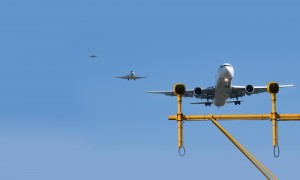The US Federal Aviation Administration (FAA) commissioned NLR to examine whether the ambitious Next Generation modernisation programme for US air traffic control will affect flight safety. This assignment stemmed indirectly from many years of close partnership between the Dutch and American national aviation authorities.
NLR experts began by analysing what types of aircraft accidents had occurred since 1990. They found 33 types, ranging from runway overshoots and ‘controlled flights into terrain’ to mid-air collisions and pilots becoming unwell. This classification resulted in an equal number of models incorporating variables that were decisive for the severity of the outcome of each accident type. In accidents resulting from runway overshoots, for example, significant factors included aircraft speed, angle of approach, brake quality and slipperiness of runway asphalt. In addition to accidents, NLR studied incidents, as these too yield significant information regarding risk. A narrow-escape scenario, in which an accident is averted, may well reveal valuable information about the risk of an actual accident occurring.
NLR used the available accident and incident data to produce precise estimates of the weight that should be assigned to all the different variables. This modelling and analysis of decisive factors should give the FAA a clear understanding of the impact that NextGen will have on the safety of US air traffic.
The US Federal Aviation Administration plans to implement an ambitious programme to modernise air traffic control. NLR assessed the impact that ‘NextGen’ will have on flight safety.


